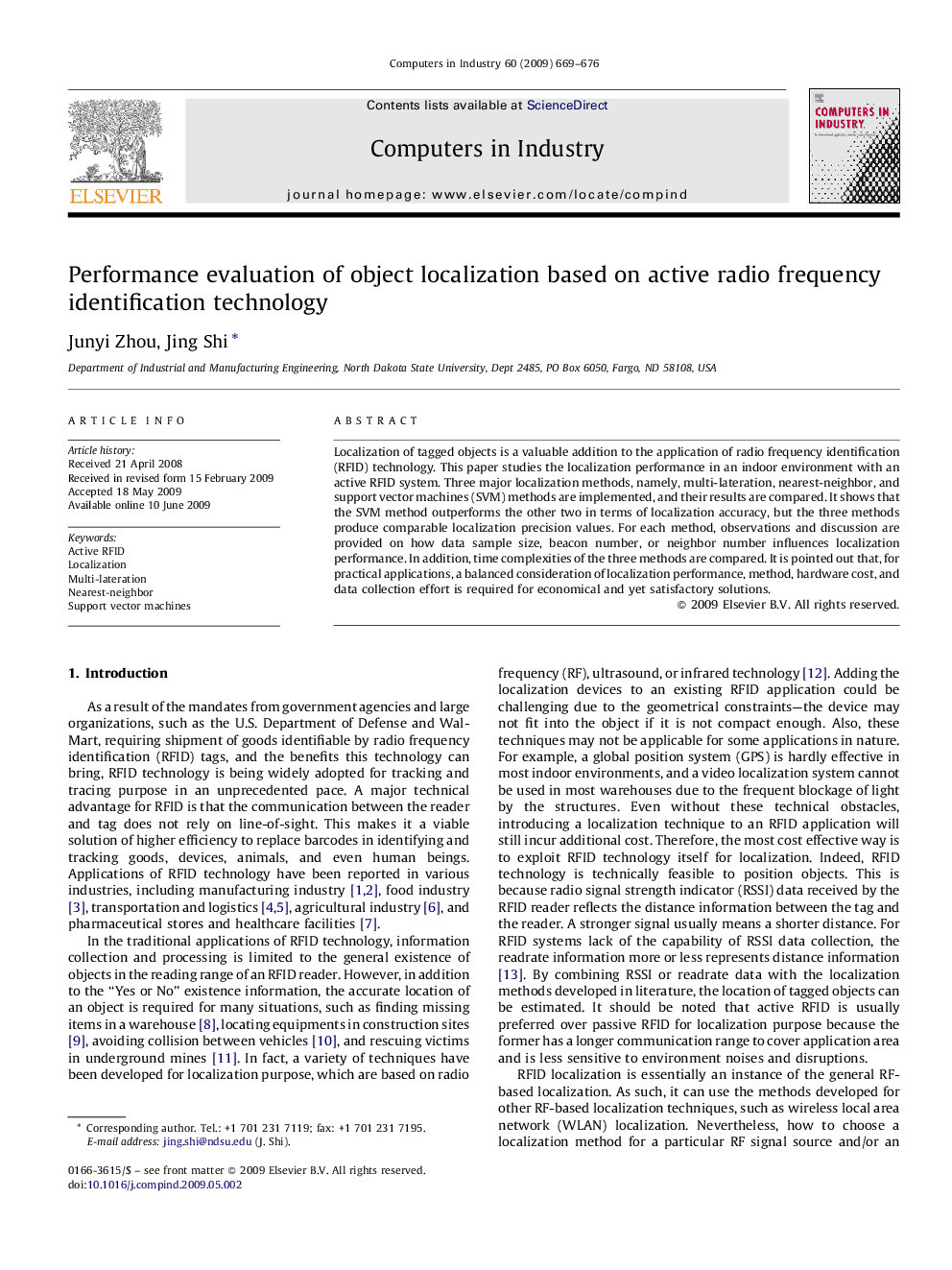| Article ID | Journal | Published Year | Pages | File Type |
|---|---|---|---|---|
| 509465 | Computers in Industry | 2009 | 8 Pages |
Localization of tagged objects is a valuable addition to the application of radio frequency identification (RFID) technology. This paper studies the localization performance in an indoor environment with an active RFID system. Three major localization methods, namely, multi-lateration, nearest-neighbor, and support vector machines (SVM) methods are implemented, and their results are compared. It shows that the SVM method outperforms the other two in terms of localization accuracy, but the three methods produce comparable localization precision values. For each method, observations and discussion are provided on how data sample size, beacon number, or neighbor number influences localization performance. In addition, time complexities of the three methods are compared. It is pointed out that, for practical applications, a balanced consideration of localization performance, method, hardware cost, and data collection effort is required for economical and yet satisfactory solutions.
